- Category
- War in Ukraine
Who Are the “TikTok Soldiers” Using Occupied Ukrainian Cities As Their Backdrop?
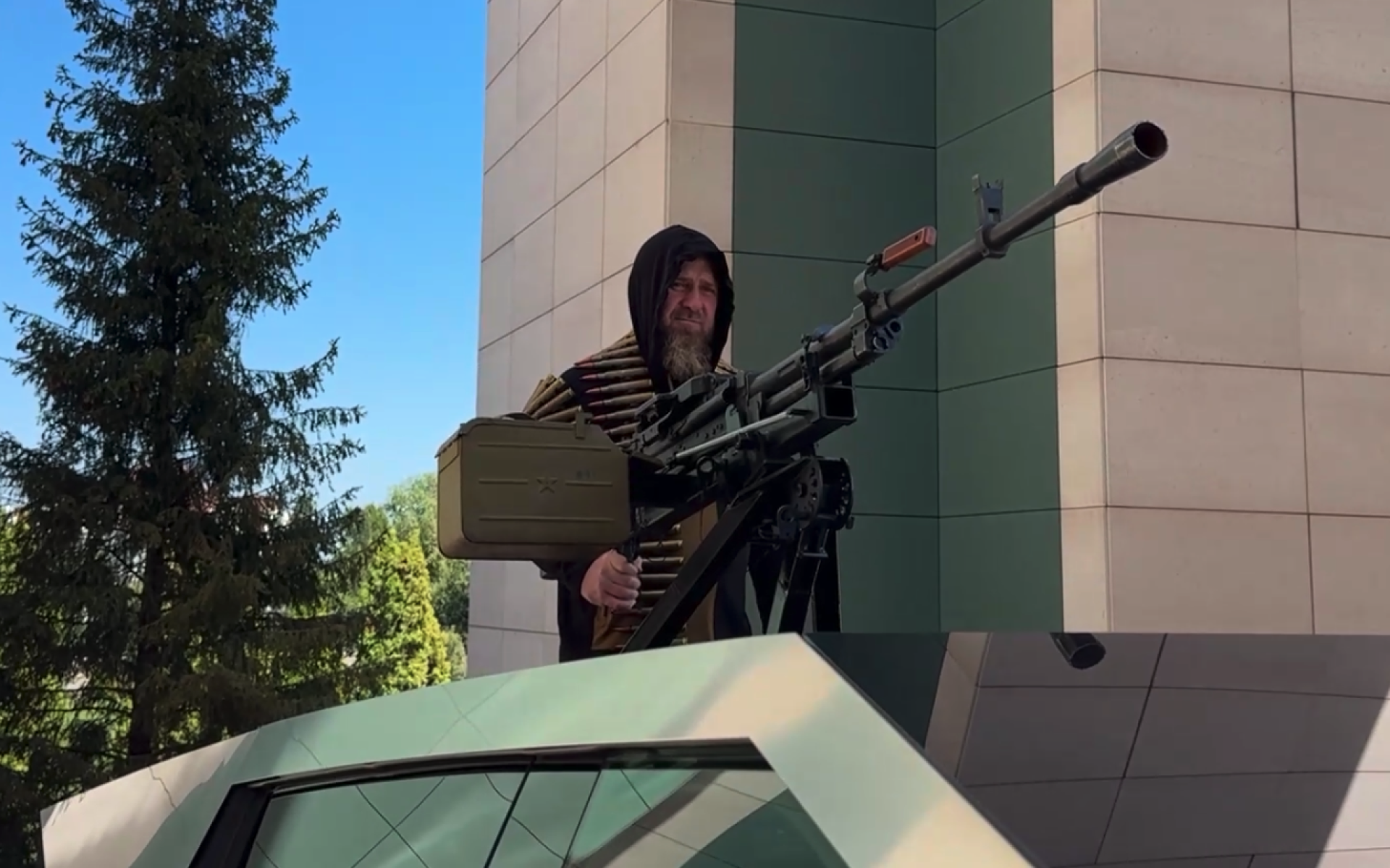
The influence of social media has broken into every aspect of modern life, including warfare. Russia’s full-scale invasion has generated a plethora of content created by soldiers both near and on the frontlines, ranging from the heartbreaking to the absurd. One trend, however, has drawn significant criticism: Chechen "Akhmat" soldiers posting videos that purport to show active combat but are often revealed to be cartoonishly staged.
A quick scroll through your social media feed will likely reveal daily content ranging from FPV drone strikes on Russian vehicles and GoPro combat footage to TikTok challenges inside trenches. For Chechens, social media seemed to be a powerful tool to craft their message, as their president and military were early to adopt it into their strategies.
The term "TikTok soldier" emerged during the war in Ukraine to describe a type of soldier who uses the battlefield primarily as a backdrop for social media content rather than engaging in actual combat. This label has almost exclusively been applied to Chechen soldiers from the Akhmat Battalion, a unit within the Russian National Guard.
These soldiers have been criticized for posting staged or exaggerated videos of their purported “combat activities” on platforms like TikTok, which are often dismissed as poorly thought-out propaganda rather than genuine military action. The videos sometimes require a sense of suspended disbelief to receive the message.
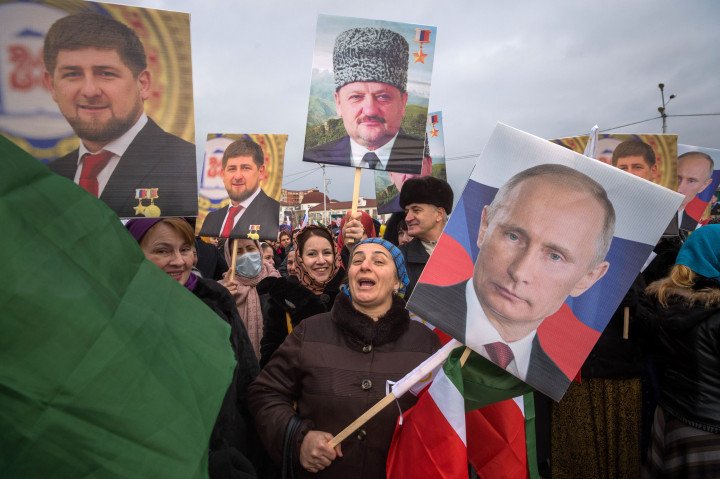
Frienemies
Chechen social media content generally aims to craft an identity rooted in bravery and honor, emphasizing a close connection to the freedom fighters who have long been associated with the country's struggle. In summary, Chechen identity has been forged through centuries of resistance against the Russian Empire and the Soviet Union, culminating in two devastating wars with Russia (1994-1996 and 1999-2000). They were initiated under Yeltsin and ultimately concluded by Vladimir Putin.
After a bloody battle that would see a third of the Chechen population either die or become refugees, the country would be intergrated into the Russian Federation after a brief period of independence. Back then, Akhmad Kadyrov was a central figure. He was a religious leader and rebel during the First War and switched allegiances to the Russian side during the Second War.
Ultimately, Vladimir Putin appointed Kadyrov as the head of the Pro-Kremlin Chechen Republic. In 2004, Akhmad Kadyrov was assassinated and his son Ramzan Kadyrov, the figure many are familiar with today, took his father's place with the blessing of Putin.
Modern Chechnya is a story of conflict, transformation, and a controversial peace. Their capital once bombed to ruins by Russia, was rapidly rebuilt. Kadyrov quickly consolidated power and maintained an unwavering loyalty to Putin, and with that Moscow money started to flow into Grozny, the country's capital.
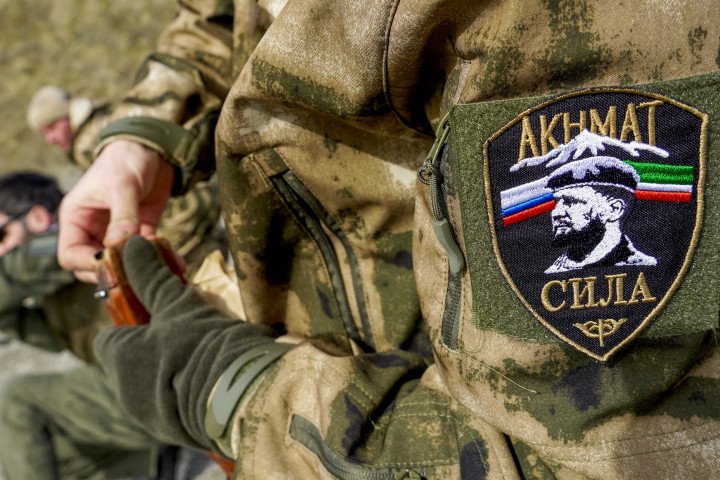
A TikTok warrior is forged
If for this story we were to only focus on Ramzam Kadyrov’s various social media channels, we would see the modern social engineering techniques of a cult of personality. Grozny’s most capable social media managers and content creators create an idealized image of a glorious leader—who receives an unfathomable amount of praise and admiration from his peers, from the likes of Vladimir Putin to Jean Claude Van Damme, and even Hilary Swank.
When a strong leader acts, those in his orbit will follow. Ramzan Kadyrov himself is an avid user of social media and encourages others in Chechnya to do the same. His active presence on platforms like Instagram has set a precedent, making social media use not just common but also a way to show loyalty to the regime.
For Chechen fighters, especially those involved in wars like the one in Ukraine, TikTok serves as a tool for psychological warfare. Videos that depict strength, readiness, and combat scenarios are aimed at striking fear in the hearts of their enemies and bolstering support back home.
In most videos, these are well-equipped, bearded men firing machine guns or valiantly charging into combat somewhere in Eastern Ukraine. The problem with these videos is how easily they can be discredited, and many online are quick to do just that.
Taking Mariupol (2022)
Standing in front of a burning building in the center of Russian-occupied Mariupol are dozens of Akhmat TikTok soldiers. In the city, much of the fighting was famously held between Russian Ground Forces and Ukrainian Marines, the National Guard, and the Azov Brigade.
Videos published on Ramzan Kadyrov’s own Telegram channels corroborate the claim that the TikTok soldiers appeared to record their “victory” after the intense fighting had subsided. Viewers can see that nearly every soldier in these videos is wearing spotless military fatigues and appears well-rested and well-fed—conditions that are typically not indicative of having endured prolonged, heavy combat.
However, there were reports of multiple civilian casualties at the hands of “Kadyrovites” inside Russian-occupied Mariupol. This wouldn’t be an isolated incident.
Chechen TikTok soldiers “bravely” engage a building (2022)
Kadyrov's Tiktok troops bravely fight with an empty building
— NEXTA (@nexta_tv) March 28, 2022
In the video you can clearly hear the cameraman shouting "Come on, come on, let's start, I'm shooting," and the Chechen soldiers, looking into the camera, run to shoot at the destroyed house. pic.twitter.com/ppjwVWS04U
Chechen soldiers were spotted in a war-torn town somewhere in eastern Ukraine, creating content for their propaganda purposes. The scene is dramatic as the Chechen soldiers break cover and rush into combat—only to target an empty building.
The soldiers open fire, many of them standing comfortably in the open, seemingly unfazed by the supposed enemy fire. Even the cameraman, filming the entire stunt, remains exposed.
Kadyrov “enters” Ukraine (2022)
Kadyrov's brave fighting in Ukraine takes him from a random Russian gas station all the way to his palace in Grozny pic.twitter.com/BNubD0QrO1
— Razordawn (@razordawn_) March 31, 2022
Chechen leader Ramazan Kadyrov posted an image of himself knelt at a gas station claiming to be “at war and prayer in Mariupol”. There is one glaring issue though, behind him is a gas pump from Rosneft, a gas station that does not exist in Ukraine. Later, people would geolocated the image to a gas station right outside of Kadyrov’s palace in Grozny.
Kadyrov will personally stop the Wagner Coup (2023)
Kadyrov announced that in the event of the departure of Wagner PMC from Bakhmut, he will send Akhmat fighters there.
— NOELREPORTS 🇪🇺 🇺🇦 (@NOELreports) May 5, 2023
If so, TikTok will be overloaded with video's. pic.twitter.com/pjY9tz9NM0
During the turmoil that would eventually lead to the 2023 failed coup attempt by Yevgeny Prigozhin and the Wagner PMC, Ramazan Kadyrov personally vowed to take over their operational duties, which involved storming fortified Ukrainian positions. This never happened, but it did culminate in an online beef between the two groups.
Chechen leaders would post videos of themselves insulting Prigozhin, saying “Stop talking and shouting, say the place and time and we will meet”. Prigozhin and his mercenaries would go on to march onto Moscow in an attempt to take revenge on the Russian Ministry of Defense. Waiting for him was a large column of Chechen TikTok soldiers, recording their massive show of force.
Much of the internet was preparing for a heavyweight spectacle between the two military forces. This unfortunately never happened.
TikTok soldiers sent to secure Russia’s borders (2024)
🤡 Kadyrov's TikTok forces are bravely liberating Kursk People's Republic from the railroad rails. Now, I've seen it all 🤦♂️ pic.twitter.com/1qxRRH7gvG
— 𝕮𝖍𝖎𝖋𝖋𝖆 🇺🇦🇦🇺 (@romankulish) August 7, 2024
A Chechen TikTok special forces unit was recently spotted in the Russian town of Sudzha, near the Ukrainian border, as Ukrainian forces advanced into the Kursk region. In one of the Chechen PR videos circulating on social media, an Akhmat soldier is seen firing aimlessly at train tracks. He then turns to the camera and boldly declares, “Soon there will be no Ukraine.”
However, as the situation on the ground escalated, a different reality began to surface. Reports emerged that many of these soldiers retreated when Ukrainian troops drew closer. This was particularly ironic given that their commander, Apti Alaudinov, had been urging Russian conscripts to show bravery and head into battle. The apparent retreat of Alaudinov's own well-equipped and well-funded soldiers raised significant questions about their effectiveness.
Adding to the drama, dozens of Chechen soldiers were reportedly taken prisoner by Ukrainian forces during the incursion. Despite clear evidence circulating online, including videos of the captured fighters, Alaudinov quickly denied the reports, insisting that none of his soldiers had been captured. He later attempted to correct his comments, by saying that none of the Special Forces had been captured*.
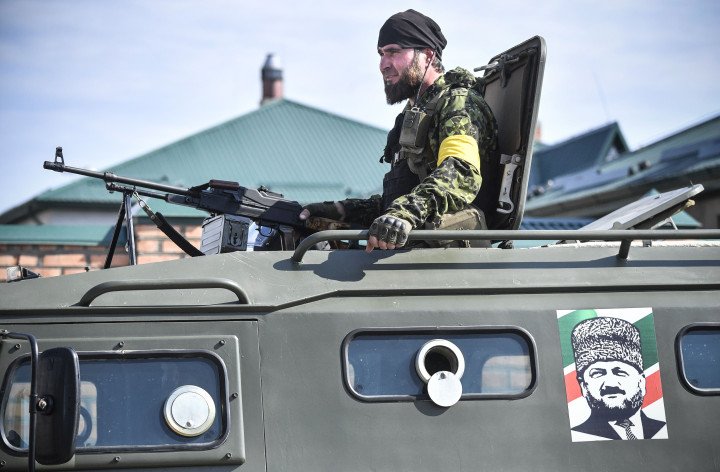
All Jokes Aside
All jokes aside, the Akhmat soldiers are a dangerous group with a brutal reputation. Their specific function isn't as a combat force with offensive capability, as they are tasked with quelling any insurrections inside of occupied territories. Their mission often involves the torture and killing of innocent civilians.
Additionally, they are used to “remotivate” Russian soldiers who refuse to fight, establishing torture chambers near the frontlines. Reports have also surfaced that wounded Russian soldiers have also been executed by Akhmat fighters during the attempted siege of Kyiv.
Beyond Ukraine, the Akhmat soldiers serve as Ramzan Kadyrov's private army in Chechnya, where they operate with near impunity, and have a degree of autonomy from the Russian Armed Forces enforcing Kadyrov's will and maintaining his grip on power through whatever means necessary. But this does not stop them from using TikTok to advance their goals.

-531fe8d92c87f1630d3f1a2503c33089.png)
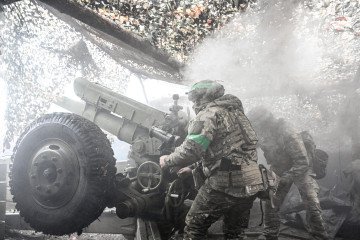
-29a1a43aba23f9bb779a1ac8b98d2121.jpeg)
-886b3bf9b784dd9e80ce2881d3289ad8.png)


-f88628fa403b11af0b72ec7b062ce954.jpeg)